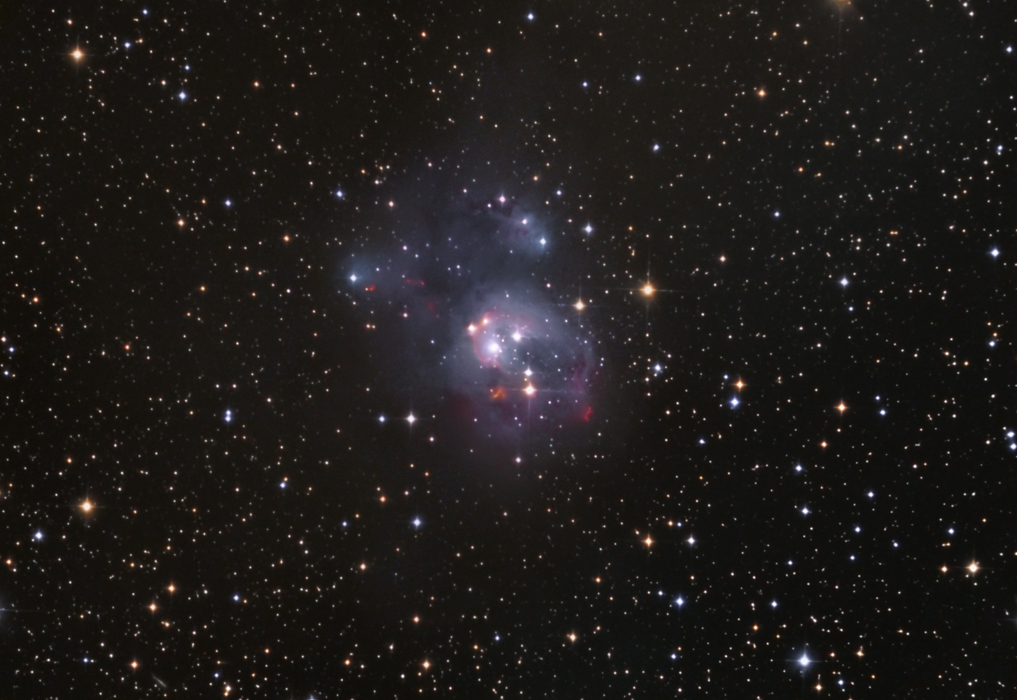IC 5134 and NGC 7129 with Spitzer rollover
Characteristics:
FOV: Approximately 28' x 42'
Distance: 3,000 light years
RA (J2000): 21h 42m 50s
Dec (J2000): 66 degrees 06' 35"
Position Angle (Pinpoint): 0 degrees
Description:
The reflection nebula IC 5134 and associated star cluster NGC 7129 is a
beautiful jewel that hides a violent stellar nursery beneath shrouds of
dust and gas. Some of the stars can be seen in visible light, as
shown in the image above, but others can only be appreciated by virtue
of their ability to heat surrounding gas (via UV emission) to emit in
the infrared spectrum, as detected by the Spitzer
Space Telescope rollover image (place your arrow over the above
image to see the Spitzer rollover of this region). The false
color Spitzer image shows a cone shaped green region not apparent in
visible light, just left of center, representing infrared emissions
from carbon monoxide as a result of excitation by supersonic jets
emitted by the bright stars in the center of NGC 7129. The
reddish linear regions in the visible light image represent Herbig-Haro
objects, which have been excited to emit in hydrogen alpha by energetic
jets emitted by young stars within the nebula. On the higher
magnification views, you can appreciate the presence of additional
stars deeply embedded within the nebula, only seen in infrared light,
by "blinking" back and forth between the visible light image and the
Spitzer infrared image. More information about this object may be
found here.
Photographic
Details:
Date: July 10, 2008 (luminance); July 12, 2008 (RGB)
Scope: Vixen VC200L at f6.1 (FL = 1228 mm) on the
Takahashi NJP
Mount
Autoguider: SBIG ST-402 with
60mm guidescope, focal length 227mm
Camera: Apogee U32 -20C
Filters: Astronomik
Clear (unblocked), R, G, B filters
Exposures: Luminance, 48 x 5'
(unbinned); R, 12 x 5' (binned
2x2); G, 12 x 5' (binned 2x2); B 12 x 8' (binned 2x2). Total
exposure, 7.6 hours
Conditions: Transparency good; seeing (FWHM)
approximately 3"
Post-processing:
Debloomed, calibrated, aligned, and Sigma
Clip combined
in Maxim. DDP
in ImagesPlus (IP). Deconvolution in AIP4WIN.
Further processing in Photoshop
CS (16
bit format).
Please
note: Graphics on this website may not be reproduced without
author permission.
Back to Nebulae
Home
